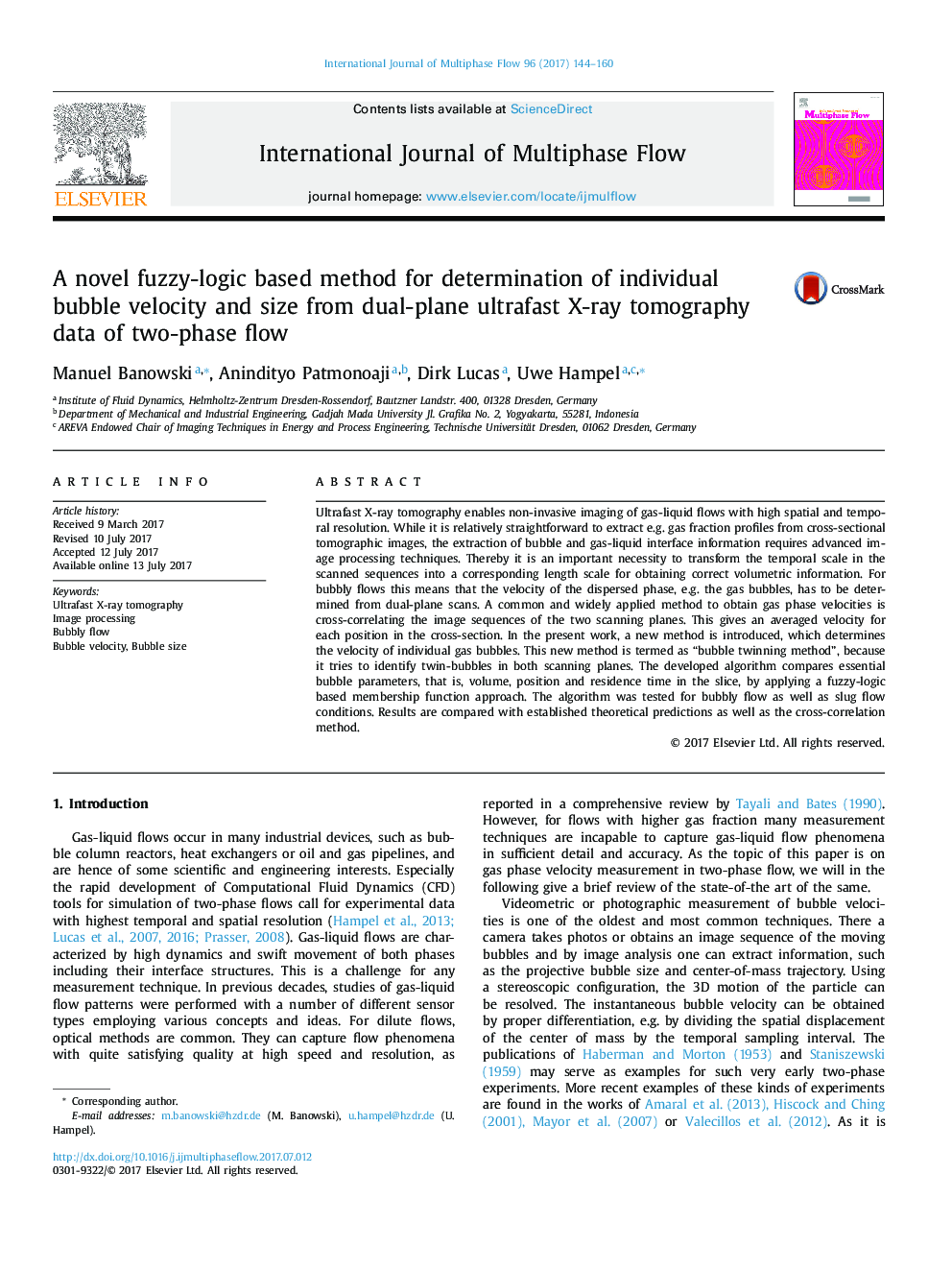| Article ID | Journal | Published Year | Pages | File Type |
|---|---|---|---|---|
| 4994936 | International Journal of Multiphase Flow | 2017 | 17 Pages |
Abstract
Ultrafast X-ray tomography enables non-invasive imaging of gas-liquid flows with high spatial and temporal resolution. While it is relatively straightforward to extract e.g. gas fraction profiles from cross-sectional tomographic images, the extraction of bubble and gas-liquid interface information requires advanced image processing techniques. Thereby it is an important necessity to transform the temporal scale in the scanned sequences into a corresponding length scale for obtaining correct volumetric information. For bubbly flows this means that the velocity of the dispersed phase, e.g. the gas bubbles, has to be determined from dual-plane scans. A common and widely applied method to obtain gas phase velocities is cross-correlating the image sequences of the two scanning planes. This gives an averaged velocity for each position in the cross-section. In the present work, a new method is introduced, which determines the velocity of individual gas bubbles. This new method is termed as “bubble twinning method”, because it tries to identify twin-bubbles in both scanning planes. The developed algorithm compares essential bubble parameters, that is, volume, position and residence time in the slice, by applying a fuzzy-logic based membership function approach. The algorithm was tested for bubbly flow as well as slug flow conditions. Results are compared with established theoretical predictions as well as the cross-correlation method.
Related Topics
Physical Sciences and Engineering
Chemical Engineering
Fluid Flow and Transfer Processes
Authors
Manuel Banowski, Anindityo Patmonoaji, Dirk Lucas, Uwe Hampel,
